
Scooby-Doo is an American media franchise owned by Warner Bros. Discovery and created in 1969 by writers Joe Ruby and Ken Spears through their animated series, Scooby-Doo, Where Are You!, for Hanna-Barbera. The series features 4 teenagers: Fred Jones, Daphne Blake, Velma Dinkley, and Shaggy Rogers, and their talking dog named Scooby-Doo, who solve mysteries involving supposedly supernatural creatures through a series of antics and missteps, while traveling using a brightly colored van called the "Mystery Machine". The Franchise has several live-action films and shows.

Terrytoons was an American animation studio in New Rochelle, New York, that produced animated cartoons for theatrical release from 1929 to 1973. Terrytoons was founded by Paul Terry, Frank Moser, and Joseph Coffman, and operated out of the "K" Building in downtown New Rochelle. The studio created many cartoon characters including Fanny Zilch, Mighty Mouse, Heckle and Jeckle, Gandy Goose, Sourpuss, Dinky Duck, Little Roquefort, the Terry Bears, Dimwit, and Luno; Terry's pre-existing character Farmer Al Falfa was also featured often in the series.
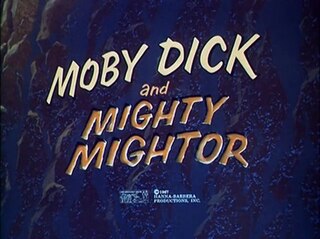
Moby Dick and Mighty Mightor is an American Saturday morning animated television series produced by Hanna-Barbera Productions that ran on CBS from September 9, 1967 to January 6, 1968, airing in reruns until September 6, 1969. Despite Moby's name coming first, he had only one short per half-hour episode, sandwiched between two with Mightor. The same structure was used the previous season for Frankenstein Jr. and The Impossibles.
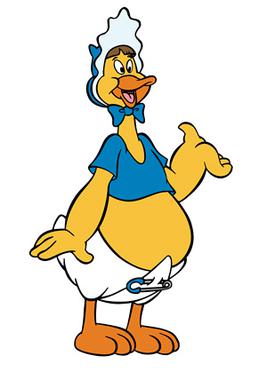
Baby Huey is a gigantic and naïve duckling cartoon character. He was created by Martin Taras for Paramount Pictures' Famous Studios, and became a Paramount cartoon star during the 1950s. Huey first appeared in Quack-a-Doodle-Doo, a Noveltoon theatrical short produced and released in 1950.
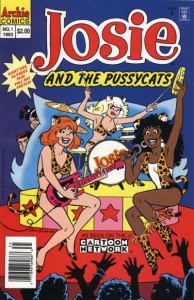
Josie and the Pussycats is a teen-humor comic book about a fictional rock band, created by Dan DeCarlo and published by Archie Comics. It was published from 1963 until 1982; since then, one-shot issues have appeared on an irregular basis. A second series, set in the New Riverdale universe, launched in September 2016.

Snooper and Blabber is one of the three segments from The Quick Draw McGraw Show. This show was produced by Hanna-Barbera between September 19, 1959 and October 20, 1961, and consists of 45 episodes.
Screwy Squirrel is an animated cartoon character, an anthropomorphic squirrel created by Tex Avery for Metro-Goldwyn-Mayer. He is generally considered the wackiest and outright most antagonistic of the screwball cartoon characters of the 1940s.
Daniel Campbell Gordon was an American storyboard artist and film director, best known for his work at Famous Studios and Hanna-Barbera Productions. Gordon was one of the first famous film directors. He wrote and directed several Popeye the Sailor and Superman cartoons. Later in his career, he worked on several cartoons featuring Yogi Bear, Huckleberry Hound, and others. His younger brother, George Gordon, also worked for Hanna-Barbera.
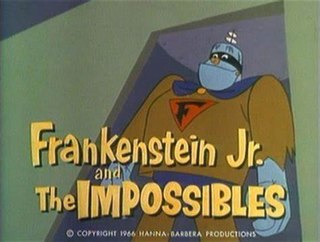
Frankenstein Jr. and The Impossibles is an American animated television series produced by Hanna-Barbera Productions. It premiered on September 10, 1966 on CBS, and ran for two seasons on Saturday mornings.
Kin Platt was an American writer, artist, painter, sculptor, caricaturist, and comics artist, best known for penning radio comedy and animated TV series, as well as children's mystery novels, one of which earned him the Mystery Writers of America Edgar Award.

Matty's Funday Funnies is a 1959–1961 American animated anthology television series.
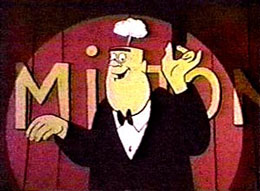
Milton the Monster, also called The Milton the Monster Show, is an American Saturday morning animated cartoon TV series that ran on ABC from October 9, 1965, to September 8, 1968. It was produced and directed by Hal Seeger.
HaroldSeeger was an American animated cartoon producer and director who owned his own studio, the Hal Seeger Studio. He is most famous as the creator of the 1960s animated series Batfink, Milton the Monster and Fearless Fly. During the 1930s and 1940s he was also active as a comics writer and artist, most famously for the Betty Boop comic strip and Leave It to Binky.
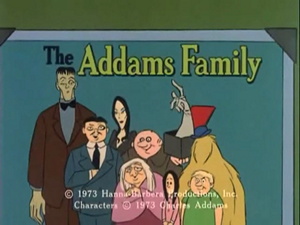
The Addams Family is an American animated sitcom adaptation of the Charles Addams single-panel comic for The New Yorker. The show was produced by Hanna-Barbera Productions for Saturday mornings in 1973, and was later rebroadcast the following season. Jackie Coogan and Ted Cassidy, who played Uncle Fester and Lurch, respectively, in the 1960s television series, returned in voice-over roles. The cast also included 10-year-old Jodie Foster, who performed the voice of Pugsley Addams. The show's theme music was completely different and had no lyrics or finger snapping, but retained a recognizable part of the four-note score from the live-action series.

Laurel and Hardy is a 1966-1967 American animated television series and an updated version of Stan Laurel and Oliver Hardy's comedic acts by the animation studio Hanna-Barbera and Larry Harmon Productions. Harmon had been developing the series since 1961, while Stan Laurel was still alive, although Laurel had very little involvement.
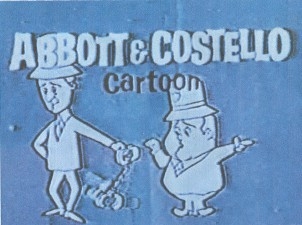
The Abbott and Costello Cartoon Show is an American half-hour animated series of the famous comedy duo that aired in syndication from September 9, 1967, to June 1, 1968. Each of the 39 individual episodes consisted of four five-minute cartoons. The cartoons were created jointly by Hanna-Barbera, RKO General, and Jomar Productions between 1965 and 1967. The series was syndicated by Gold Key Entertainment and King World Productions, with the rights now owned by Warner Bros. Television Distribution.

Magilla Gorilla is a fictional gorilla and the star of The Magilla Gorilla Show by Hanna-Barbera that aired from 1963 to 1965.
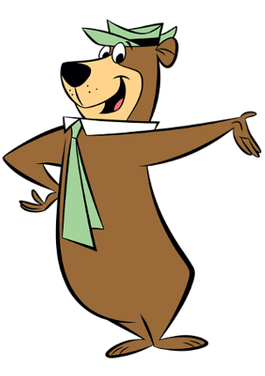
Yogi Bear is an anthropomorphic animal character who has appeared in numerous comic books, animated television shows, and films. He made his debut in 1958 as a supporting character in The Huckleberry Hound Show.

Jonny Quest is an American animated science fiction adventure television series about a boy who accompanies his scientist father on extraordinary adventures. It was produced by Hanna-Barbera Productions for Screen Gems, and was created and designed by comic book artist Doug Wildey.
Events in 1917 in animation.













